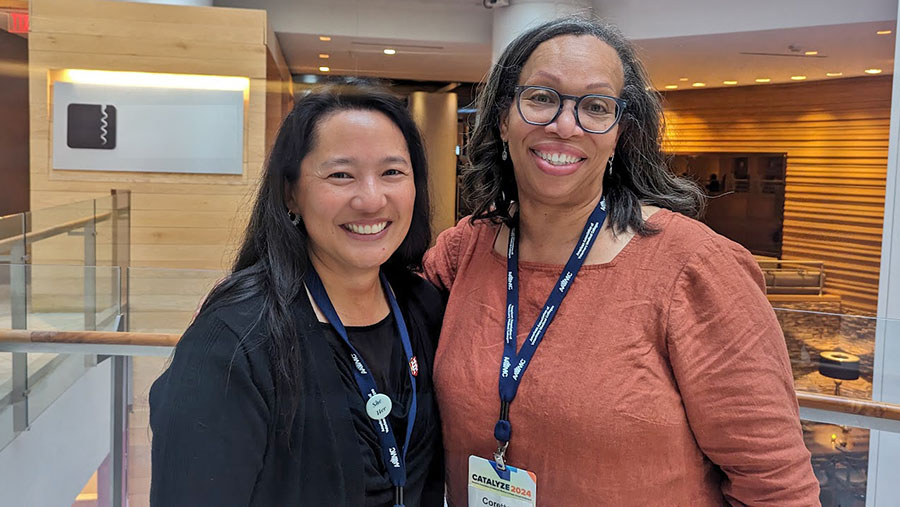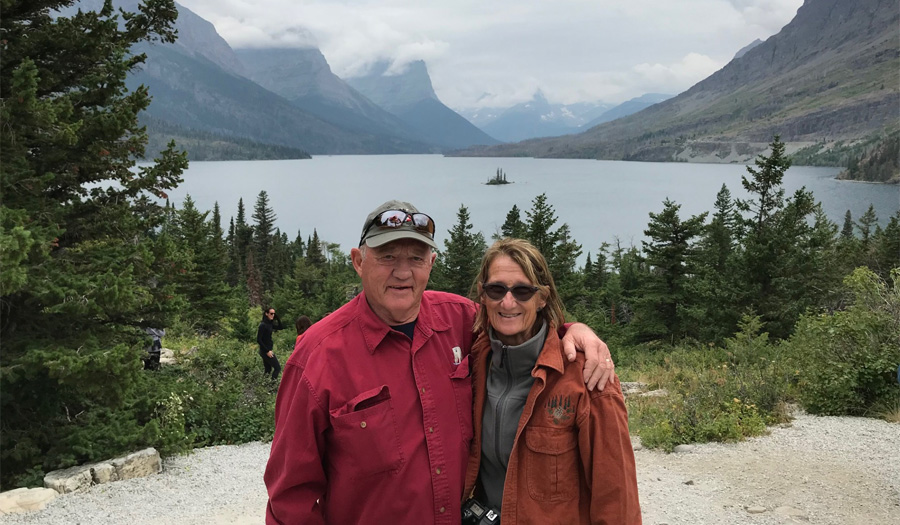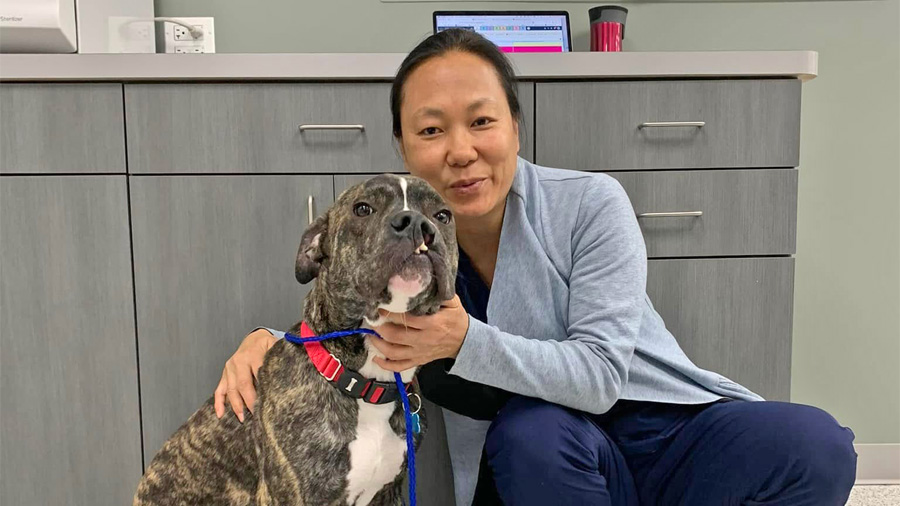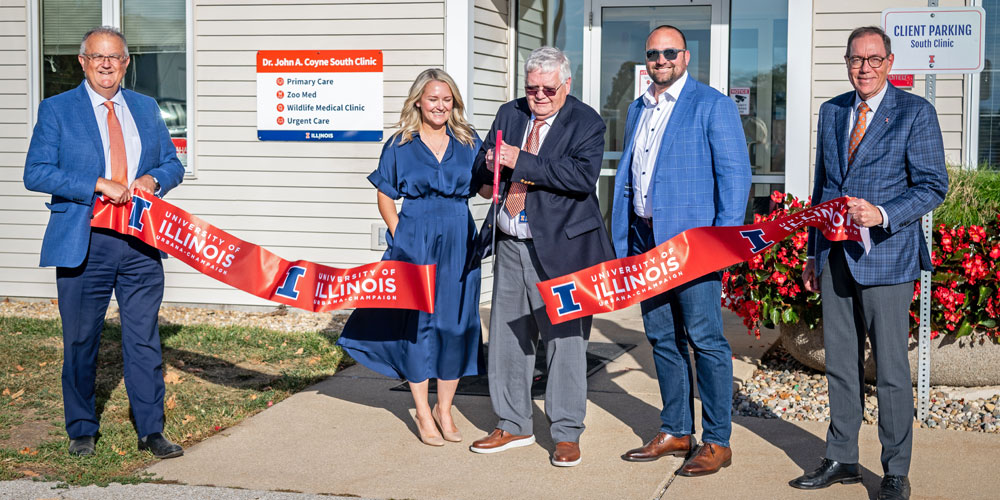Two University of Illinois alumnae are among the founding deans recently announced by institutions seeking to open veterinary colleges in the next few years. Dr. Coretta Patterson, Class of 1995, takes the helm at the proposed Midwestern University College of Veterinary Medicine–Illinois, located in Downers Grove. Dr. Christina V. Tran, Class of 2000, is the founding dean of the proposed School of Veterinary Medicine at Hanover College in Hanover, Indiana. (Read more about Drs. Patterson and Tran.)
A dozen institutions have plans to launch colleges of veterinary medicine in the United States.
Drs. Patterson and Tran each bring decades of experience spanning academic and corporate/private settings. Both held positions at recently opened veterinary colleges in Arizona. Dr. Patterson served as the associate dean for clinical education at Midwestern’s Glendale veterinary campus from 2016 to 2018. Dr. Tran spent the past four years focused on building and implementing the clinical-year program at the University of Arizona College of Veterinary Medicine, which opened in 2020.
The two have also crossed paths through their leadership roles in organized medicine. Dr. Tran is a founding board member and past-president of the Multicultural Veterinary Medical Association, and Dr. Patterson became president of the National Association for Black Veterinarians in 2023.
(Dr. Lisa Greenhill, of the American Association of Veterinary Medical Colleges, took the photo above in April during that organization’s Catalyze 2024 annual meeting.)
Though the colleges they plan to lead have mapped out distinct approaches to curriculum and clinical education, both women see opportunities to innovate in ways that will benefit their students and ultimately the veterinary profession.
Recently they kindly agreed to answer a few questions about their new roles and what they hope to accomplish in them.
How have your own experiences shaped your views on what veterinary students need to learn in order to be successful practitioners?
Patterson: I spent most of my formative years in veterinary medicine in CVM teaching hospitals, learning and providing the best care available. The majority of our students do not go on to do this, so there is a disconnect.
And there is some literature that suggests this disconnect causes moral distress for young doctors when they go out into practice. They aren’t always able to do and offer what they were seeing during that last year at the teaching hospital.
So, I really like the model of the teaching hospital that Midwestern University has built and supports in Glendale, Arizona. There is specialty medicine there, yes, absolutely. However, students are given more time on the primary care services small or large.
My time [as group medical director at the Mars-owned BluePearl Specialty and Emergency Pet Hospital] taught me where revenue is generated in hospitals and how stewardship of those funds matters a lot. I also saw for myself that many young new doctors leave veterinary school with little idea about how their salaries are decided on once they start working.
They really need the foundational understanding that, in large part, they generate every dime of the salary that they are paid.
So, yes, salaries are on the rise, but that means so is the work, ultimately.
And, of course, pay attention to your mental health and well-being. I think that message is getting out, but then I wonder: Is that what they are seeing in the teaching hospital settings?
Tran: Having been a veterinarian for nearly 25 years, I have learned to appreciate that much of veterinary medicine is beyond the science and the math. While we are taught to be evidence-based scientists, problem solvers, and critical thinkers, we must also acknowledge the humanity of our work.
Relationship-building, self-care, empathy, contextualized care, and culturally congruent care add to the complexity of veterinary medicine. By continuing to develop these critical skills while learning the medicine and surgery, new graduates and early career veterinarians will lay a strong foundation for a sustainable career.
Beyond helping to meet workforce demands, what opportunities do you see for the veterinary colleges just now forming that could lead to positive outcomes for the veterinary industry overall?
Patterson: This year marks my 29th year since graduation from veterinary school. I think we are at a bit of an inflection point as a profession.
Salaries are higher than ever, as is demand. But prices are also extraordinarily high, and I worry that lower- to lower-middle-income families won’t be able to afford veterinary care for their pets.
I think colleges really being thoughtful about the “spectrum of care” approach to care even in the teaching hospital setting could be helpful. Veterinarians have practiced spectrum of care for years; we just haven’t called it that.
So I think there is a move to get students doing more hands-on learning and more spays and neuters prior to graduation. Also, I think exposure to specialty medicine is important because it is often how students decide they want to specialize. But we need to balance that with rich general practice, primary care experiences where they can learn in a supportive, thoughtful environment.
Tran: The opportunities for new veterinary schools to transform the veterinary industry are truly without bounds.
In the post-COVID era, more institutions are embracing the ability to educate students through remote means. Not only does this allow veterinary schools to provide their students with expertise beyond their existing faculty, but it also allows them to expand accessibility for students through closed-captioning and on-demand playback of recorded materials.
Additionally, as developing programs are creating their curricula, they can proactively incorporate relatively newer bodies of information regarding spectrum of care, access to care, veterinary social work, veterinary virtual care, and developing technologies. By introducing students to practical ways to harness technologies such as AI to create efficiencies in the practice setting, veterinary schools can better prepare future generations for successful careers.
What is most exciting or appealing to you about the role you will be undertaking? And what part of the job do you expect will be the most challenging?
Patterson: Well, despite being an Illinois graduate, I have never practiced in the state. This is a wonderful opportunity to connect (or reconnect, in some cases) with veterinarians in Illinois.
To my knowledge, of the proposed new veterinary colleges, only Midwestern plans to build a full-service teaching hospital. I am very excited to be a part of building what may very well be the last teaching hospital established at a veterinary college in my time working in the profession.
I am excited to get out and recruit and grow a team that is interested in seeing cases and providing care to animals in the greater metropolitan area but that are focused and excited about the opportunity to teach, mentor and grow and INSPIRE the next generation of veterinarians. Certainly, attracting and hiring staff and faulty be challenging, but I am a people person, so I am ready to do it, I think!
Tran: The most exciting and most challenging aspects of my role at Hanover College are the same. Building a veterinary school for future generations is no easy feat and presents a number of challenges and opportunities. And while it is hard work, I continue to surround myself with others who share my vision and support my efforts. The opportunity to leave a legacy in veterinary medicine during a pivotal time in our profession continues to inspire and motivate me.
Coretta Cosby Patterson, DVM, DACVIM-SA
Founding Dean, Proposed Midwestern University College of Veterinary Medicine–Illinois
Dr. Patterson’s numerous teaching appointments including positions at the University of Nevada, Reno; Michigan State University; and Midwestern University’s Arizona campus. Most recently she served as the director of the Office of Professional Success at The Ohio State University College of Veterinary Medicine. She has also held leadership positions in corporate practice as the group medical director at BluePearl Specialty and Emergency Pet Hospital.
After graduating with her DVM from the University of Illinois, Dr. Patterson completed an internship in small/companion animal medicine followed by a residency in small animal internal medicine at Michigan State University.
Throughout her career, Dr. Patterson has published many peer-reviewed articles, lectured frequently at national conferences, and received numerous teaching awards.
Midwestern University has purchased a 152,000-sq-ft building in Downers Grove to house a full-service teaching hospital for the proposed new veterinary college.
Christina V. Tran, DVM
Founding Dean, Proposed Hanover College School of Veterinary Medicine
Dr. Tran’s early career included working at several small animal practices in Illinois and northern California before transitioning to small animal relief work and shelter medicine in Oregon. Her roles in academia began with veterinary technology programs in Portland, Oregon, and Purdue University, where she served as program director for both the on-campus and distance learning programs. When her family moved to Arizona in 2017, she opened a small animal house call practice and worked as a veterinary telehealth consultant. Most recently she was founding faculty at the University of Arizona College of Veterinary Medicine.
Dr. Tran has served as a site visitor for the American Veterinary Medical Association Council on Education and in several leadership roles in organized veterinary medicine. In 2021, she received the Dr. Erwin Small Distinguished Alumni Award.
Hanover College plans to build a Veterinary Teaching Center, which will be shared with the proposed veterinary nursing program to be offered by Ivy Tech Community College – Madison.




